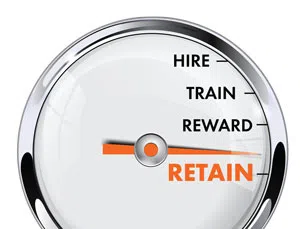If we didn’t lose so many good employees, we wouldn’t have to recruit so many new employees.
Most companies focus on hiring practices, a structured interview process and assessments in the hiring and selection process. After all, it’s so difficult “to find good people.”
I get it. That is an important part of the retention equation. But, let’s think outside the box. Is it possible this view is more about focusing on the symptom and not on the cure?
In a recent survey by Mercer, a global consulting leader in advancing health, wealth and careers, of 3,000 U.S. workers, the majority of workers are seriously considering leaving their jobs. This includes many who say they are satisfied with their work:
• 45 percent of employees who are satisfied with their organizations are considering leaving
• 42 percent of employees who are satisfied with their jobs are considering leaving
• 37 percent of employees are seriously considering leaving their jobs
These statistics should not surprise you if your workforce is comprised of Millennials. Why? Millennial employees are often happy with their workplace but place a high value on transitions and pursuing other opportunities.
Sixty percent of Millennials stay at a job for less than three years.
Tom Zender, a Phoenix-based professional CEO mentor and author of two books about business ethics, presents some interesting facts about turnover and retention. The cost of employee retention is less than the cost of replacing them. Much less.
• Fact one: the average wage of a U.S. employee is approximately $50,000.
• Fact two: voluntary termination is above 10 percent per year.
• Fact three: the average total cost of replacing an employee ranges from 25 percent to 250 percent of their base salary, depending upon their role.
Therefore, if the average cost of replacing a good employee is 50 percent of $50,000, then the cost is $25,000 per average voluntary turnover. If you lose one good person out of 10, that is $25,000 off your bottom line.
Compare that to the possibility of investing in retention.
This would calculate to spending $25,000 to all 10 employees or, $2,500 per employee.
Let us assume you have a business and the largest generation in the workforce is Millennials. Only one question remains. How could you spend it on retention?
Self-Development
According to a recent survey, training and development is the number one benefit Millennials seek when evaluating prospective employers. They place a great value on in-house training, help pay for community college and university courses, anything that will advance their careers — and quickly.
This is a generation of knowledge seekers. Millennials recognize that professional development is the pathway to success.
Flexibility
Boomers have a real issue with embracing the idea of flexible work hours or even working from home. Boomers even expect employees to show up at the start of the day, say 8:00 a.m.
If you want to extend the tenure of a millennial, you had better offer flexible hours or even days available to work from home.
Positive Reinforcement
This one is easy and very low cost. Tell your employees you appreciate their work but you must be sincere. Recognition programs are very important. Examples would be employee of the month, birthday gift card or non-cash incentives.
A non-cash incentive would be a dinner for the employee and spouse and, better yet, if they have children, provide free babysitting.
Communication
Every generation has a natural desire to “be in the know.” Company e-newsletters and company blogs may contribute, but nothing beats face-to-face communication.
By the way, Millennials define face-to-face communication as streaming video or audio conferencing — not necessarily in person. To a Millennial, there is no such thing as too much communication. This is a generation of info junkies.
Value
Being part of the community is important. No longer having the desire to being defined by work, Millennials value volunteer opportunities for a simple reason: to make the world a better place.
Even better are community activities as a department, as a company. The added bonus is team building.
Break All the Rules
Rules? Rules are for Boomers. A constant challenge to think differently is more important than process and procedure. If there is a better way, do it. If there is a faster way, do it. If there is a smarter way, do it. Do not play by the rules — make the rules as you go. Innovation. Change. That is good for business.
If we did not lose so many good employees, we would not have to recruit so many new employees.


